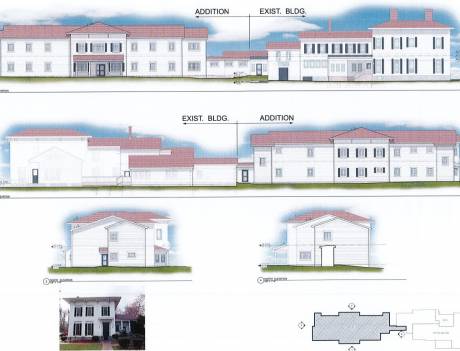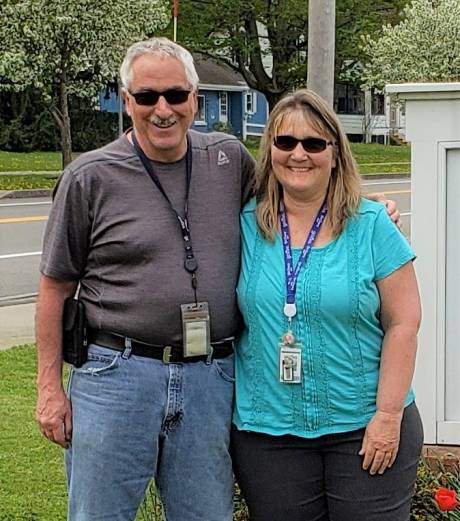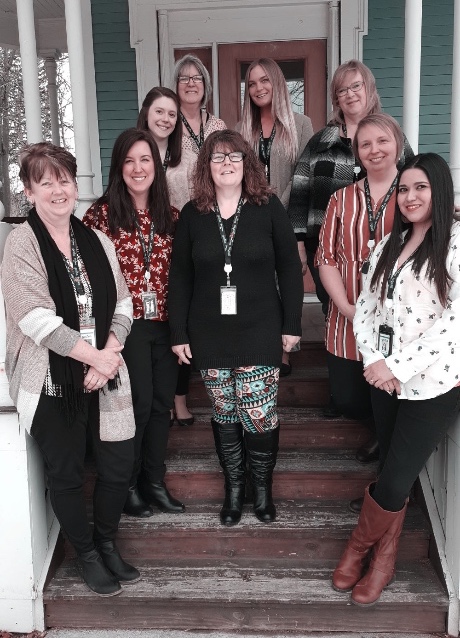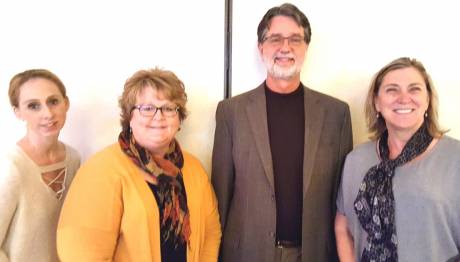GCASA moves ahead with expanded services, capital projects in Batavia and Albion
As more people get vaccinated and, hopefully, as the COVID-19 infection rate continues to subside, the executive director at Genesee/Orleans Council on Alcoholism and Substance Abuse is increasingly optimistic that all of the agency’s services soon will be returning to “in-person” status.
“The Recovery Station (on Clinton Street Road) is open to the public two days a week and our residential program is fully open because we had limited beds for a while,” John Bennett said. “We’re starting to do more in-person counseling and actually look to resume in-person group (sessions) by springtime."
He also mentioned that transportation of clients is starting to pick up and, “as always, our peer recovery advocates are available at all times to help those in need.”
GCASA has expanded its programming through the awarding of grants and is looking forward to embarking upon significant capital projects to provide essential services.
Making Room for a Detox Center
One of the major projects slated for the Genesee County campus on East Main Street is the construction of a 20-bed detoxification facility.
“Work has finally started on the new detox center, which will be attached to the existing Atwater Home residential building. This project will have 16 detox beds and four swing beds for a total of 20 beds,” Bennett offered. “The four swing beds can be used as transition beds from detox to another residential setting and/or as overflow for Atwater.”
Bennett said the detox center originally was scheduled to open in December of this year but in all likelihood won’t open until the beginning of 2022.
Supporting Living Gets a Boost
Last month, it was announced that GCASA will receive $250,000 from the Empire State Supportive Housing Initiative for an additional 10 units (beds) to go toward operating costs of its supportive living program. This means that the agency will have 15 units in Genesee County to go along with its two units in Orleans County.
ESSHI funds are earmarked for operation of the program, Bennett said.
“The home that we are renovating for this is 99 percent completed and ready to be used for the ESSHI grant,” Bennett said. “This five apartment unit will become permanent housing for individuals who have substance use disorder in the family. It can be a family member who has SUD or the individual who needs housing.”
Bennett underscored the demand for suitable housing for the population that is served by GCASA.
“Having adequate housing, jobs, daycare, food and balanced sober recreational activities can have a huge impact on the outcomes for persons and families dealing with SUD,” he explained. “By building more permanent housing, GCASA is addressing the social determinants of health that can make a difference in person’s recovery.”
Women’s Residential Facility in Albion
GCASA also is excited about the construction of a 25-bed women’s residence to be located in the Orleans County Village of Albion. Bennett said the agency is hoping to have its state Department of Health contract within weeks, with construction bids to go out in November.
“Ten of the units will have the capacity to house women with children,” Bennett said. “It’s sorely needed as there aren’t that many programs around that offer services to women and their preschool age children, which is a significant barrier for women to receive the intensive-type treatment they may need for addiction.”
He said that there are only two programs west of Albany that assist women and children in this way.
“Our percentage of female population has gone up over the years. I think when we wrote the grant it had gone up over 12 percent in a three- or four-year period – up to the mid- or high-30’s,” he advised.
Renovations at The Recovery Station
Bennett said GCASA has received several bids to complete the Phase II renovations of The Recovery Station (the old Bohn's Restaurant). This project will create office space for eight employees of the Genesee Prevention Education department – who will relocate from the East Main Street office -- as well as a laundry room, new bathroom and small meeting room.
“A final Phase III project for The Recovery Station will be completed at a future date and will include rebuilding the commercial kitchen, creating storage and two small additional offices,” he said. “This has been an amazing reuse of an old commercial building.”
Another project focuses on renovation of the kitchen space at GCASA’s childcare center on Harvester Avenue, said Bennett, adding that childcare will resume within the month or as soon as the renovations are complete.
Hotline is There in a Crisis Situation
He mentioned the GCASA peer hotline is available “24/7 for people in crises.” Calls coming into (585) 815-1800 will trigger response from the agency’s trained peer recovery advocates.
In closing, he said that the addition of these new programs and projects has increased the organization's size by close to 40 percent over the past five years.
“All the credit goes to our staff, who have tirelessly worked through this pandemic to serve our communities,” Bennett said, noting that most GCASA employees have been vaccinated.
Disclosure: Story by Mike Pettinella, GCASA publicist.





